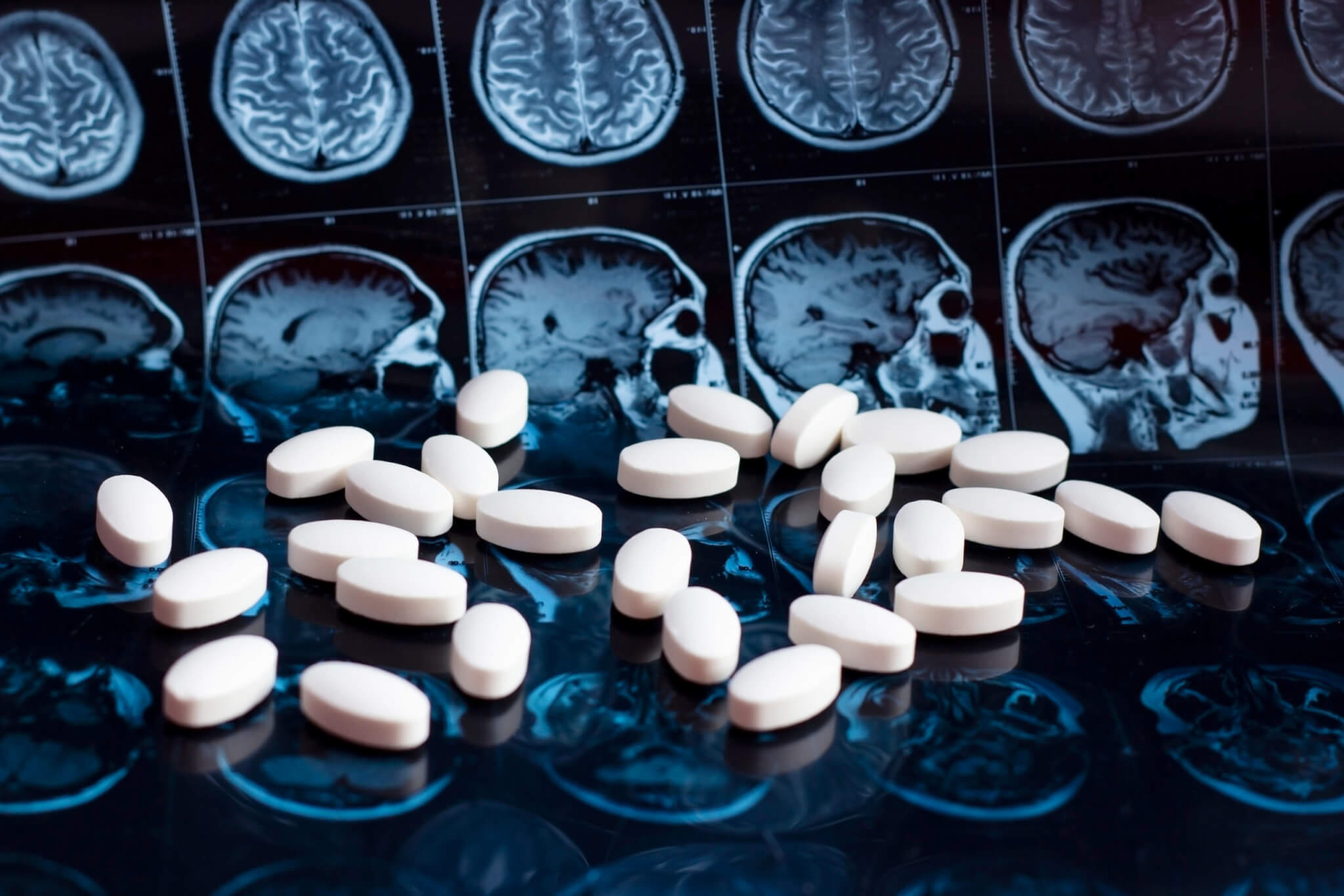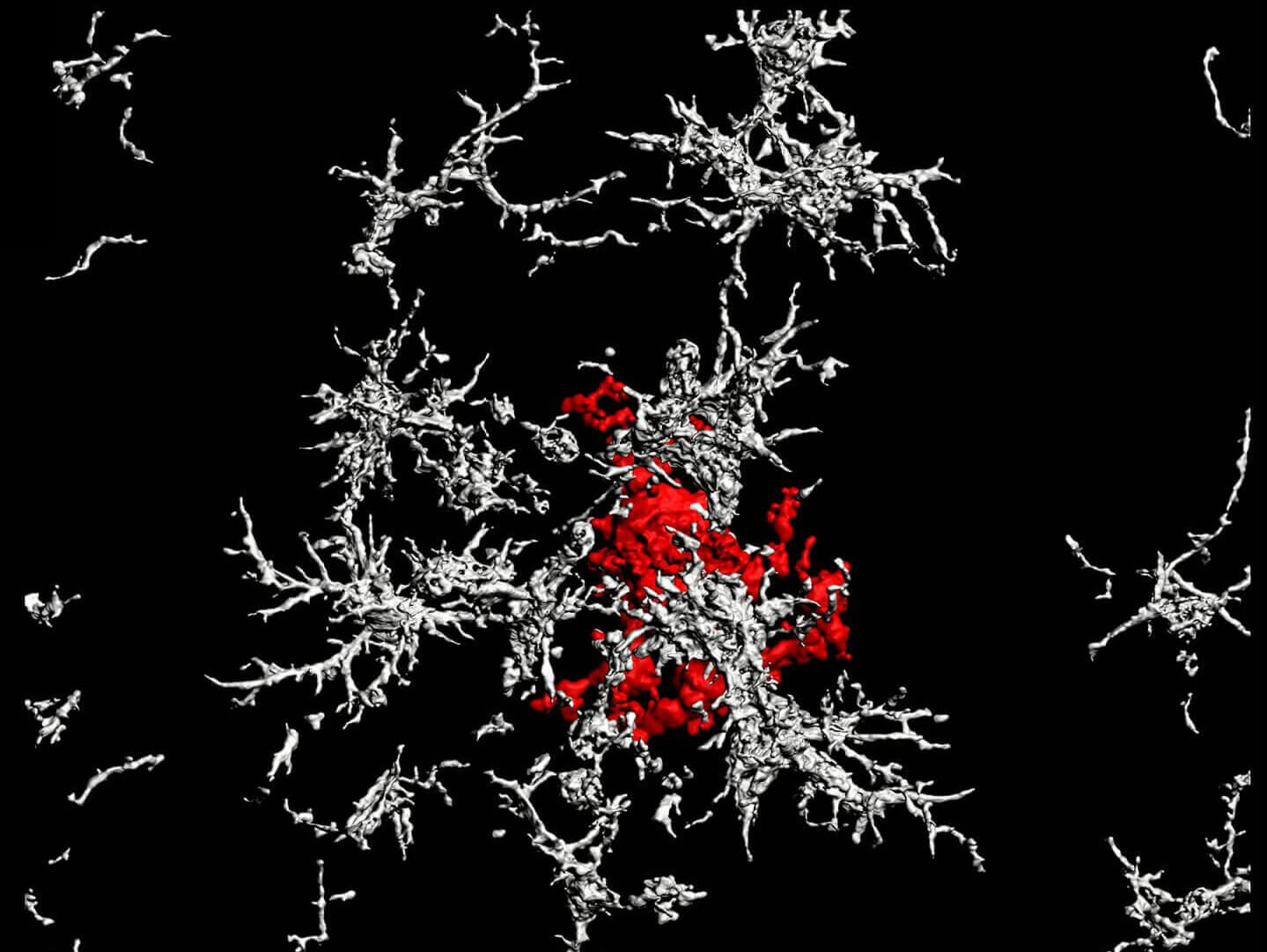SAN DIEGO — A class of HIV drugs may be able to treat more than one deadly disease. Scientists from Sanford Burnham Prebys recently discovered these antiviral drugs — known as nucleoside reverse transcriptase inhibitors — can help prevent the onset of Alzheimer’s disease. The landmark study, published in the journal Pharmaceuticals, could potentially help millions worldwide who suffer from the neurodegenerative disease.
NRTIs work by blocking an enzyme called reverse transcriptase (RT) that is essential for HIV to replicate itself. In recent years, scientists have discovered that reverse transcriptase activity also plays a role in a process called somatic gene recombination that goes haywire in the brains of Alzheimer’s patients. This finding raised the tantalizing possibility that NRTIs could potentially be repurposed to treat or prevent Alzheimer’s by inhibiting the same reverse transcriptase activity.
“Thus, we looked at HIV-positive individuals taking RT inhibitors and other combined antiretroviral therapies as they aged, and asked the question: How many of them got Alzheimer’s disease?” says lead study author Dr. Chun, professor and director of the Translational Neuroscience Initiative at Sanford Burnham Prebys, in a media release. “And the answer is that there were many fewer than might have been expected compared to the general population.”

To put this idea to the test, Sanford Burnham Prebys researchers took advantage of the fact that, thanks to effective antiretroviral therapy, many HIV-positive individuals are now living into old age. Scientists combed through a massive database of 225,000 medical and prescription claims, focusing on patients over 60 who would be at risk of developing Alzheimer’s. They divided the data into three groups:
- HIV-positive patients taking NRTIs
- HIV-positive patients not taking NRTIs
- HIV-negative control patients not taking NRTIs
Researchers then tracked the incidence of new Alzheimer’s diagnoses in each group over a nearly three-year observation window. After adjusting for age and sex differences between the groups, a striking pattern emerged — HIV patients on NRTI therapy had a significantly lower risk of developing Alzheimer’s compared to the other two groups.
When scientists looked closer, they found the protective effect was strongest in patients taking NRTIs alone, without a second class of HIV drug called protease inhibitors. In fact, protease inhibitors seemed to counteract the benefits of NRTIs, possibly because they block enzymes that cut up amyloid precursor protein, potentially increasing Alzheimer’s risk through a separate mechanism.
“You cannot feasibly run a prospective clinical trial with this number of patients,” notes Dr. Chun. “This approach is a way to look at how a drug can act on a large patient population.”
While the results are preliminary and need to be confirmed through randomized clinical trials, experts say the study provides an exciting proof-of-concept for using NRTIs and optimized versions of these drugs to ward off Alzheimer’s. NRTIs are already known to be safe in older populations thanks to decades of use in HIV patients. If their effectiveness against Alzheimer’s is validated, these drugs could potentially be prescribed to stave off cognitive decline in at-risk individuals, such as those with mild cognitive impairment, a family history of Alzheimer’s, or even healthy people carrying risk genes like APOE4.
“What we’re looking at now is very crude,” concludes Dr. Chun. “The clear next step for our lab is to identify which versions of RTs are at work in the AD brain so that more targeted treatments can be discovered, while prospective clinical trials of currently available RT inhibitors on persons with early AD should be pursued.”

The findings also open up new avenues for research into the precise mechanisms through which dysregulated reverse transcriptase activity contributes to Alzheimer’s and the identification of novel biomarkers and drug targets. One key question is what is generating the reverse transcriptase in aging brains — scientists believe endogenous retroviruses left over in our DNA from ancient infections may be the culprit.
With Alzheimer’s cases projected to triple by 2050 as populations age, the lack of effective treatments is a looming public health crisis. While much more work remains to be done, the new study offers a glimmer of hope that a solution may be hiding in plain sight in the medicine cabinets of many people with HIV. Sometimes, the most promising advances come from unexpected places — and viruses that have long plagued humanity may ironically point the way to future therapies for our most devastating neurodegenerative disease.
Overview of Alzheimer’s Disease Treatments and Therapies
Alzheimer’s disease is a progressive neurodegenerative disorder that affects tens of millions of people worldwide. While there is no cure for Alzheimer’s, various treatments and therapies can help manage symptoms and improve quality of life. This post provides an overview of the current approaches to treating and managing the deadly disease.
Pharmacological Treatments
- Cholinesterase Inhibitors: Donepezil, Rivastigmine, and Galantamine
- NMDA Receptor Antagonist: Memantine
- Combination Therapy: Donepezil and Memantine
Non-pharmacological Therapies
- Cognitive Stimulation Therapy (CST)
- Reminiscence Therapy
- Music Therapy
- Art Therapy
- Pet Therapy
- Multisensory Stimulation
Lifestyle Interventions
- Physical Exercise
- Cognitive Training and Mental Stimulation
- Social Engagement
- Healthy Diet (e.g., Mediterranean Diet, MIND Diet)
- Sleep Hygiene
- Stress Management
Caregiver Support and Education
- Caregiver Training Programs
- Respite Care Services
- Support Groups
- Counseling and Therapy for Caregivers
Emerging Treatments and Research
- Immunotherapy (Aducanumab and other monoclonal antibodies)
- Disease-modifying therapies targeting Amyloid and Tau
- Stem Cell Therapy
- Gene Therapy
- Repurposing Existing Drugs (e.g., antiviral medications, diabetes drugs)
It is essential to work closely with healthcare professionals to develop a personalized treatment plan that addresses individual needs and preferences. A combination of pharmacological treatments, non-pharmacological therapies, and lifestyle interventions may provide the best approach to managing Alzheimer’s symptoms and improving overall well-being. Additionally, ongoing research continues to explore new treatments and therapies that may offer hope for better management and potentially even prevention of Alzheimer’s in the future.
StudyFinds’ Matt Higgins contributed to this report.
